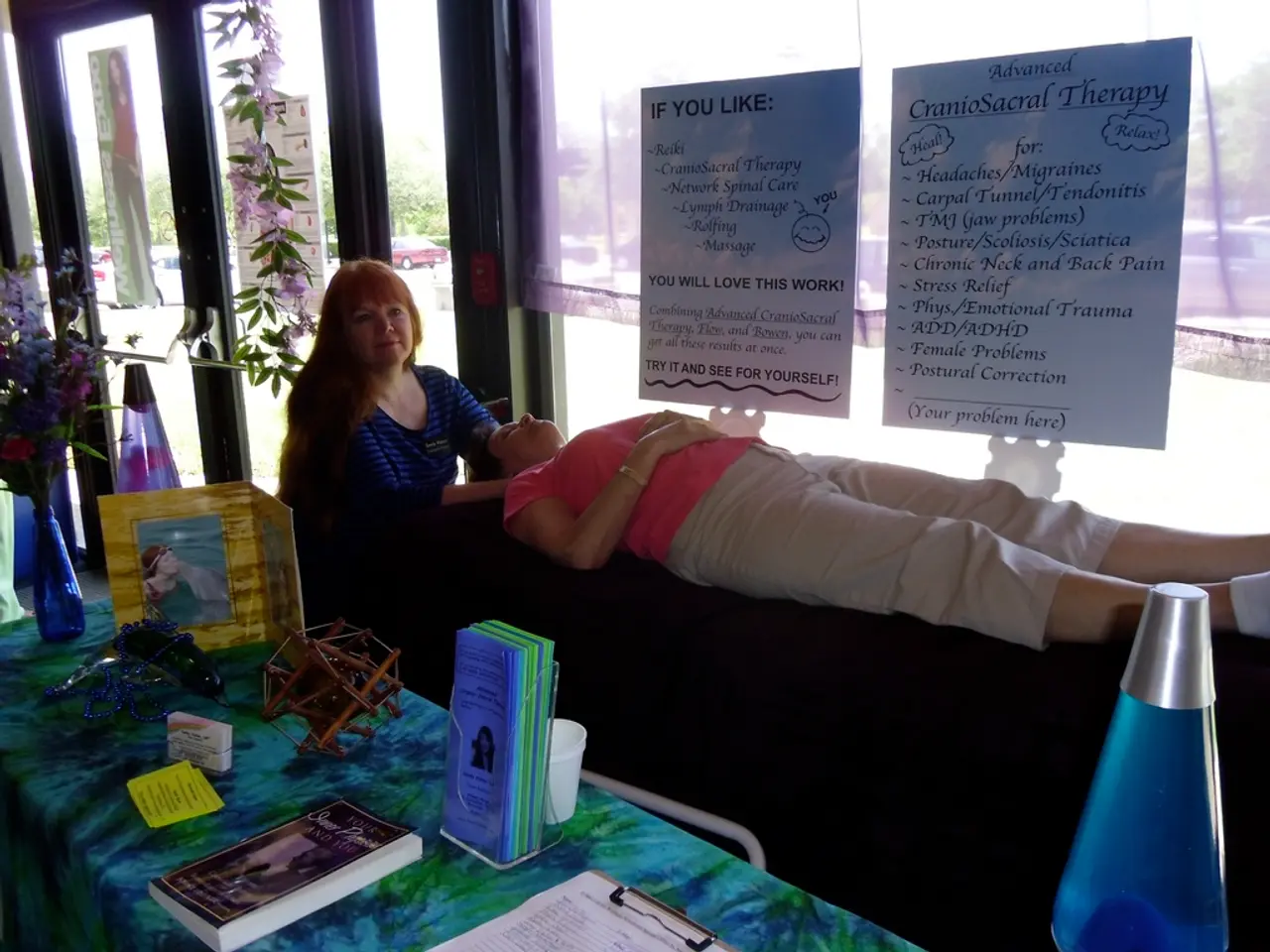Managing sciatic nerve pain at night: Strategies for alleviation
Sciatica, a common condition characterised by pain, numbness, or weakness in the lower back and legs, can make getting a good night's sleep challenging. However, adopting the right sleep positions and employing some simple strategies can help manage sciatica pain during the night.
Recommended Sleep Positions
The best sleep positions for sciatica are:
- Sleeping on your back with a pillow under your knees. This position helps maintain a neutral spine and reduces pressure on the sciatic nerve. Elevating knees slightly alleviates nerve tension and supports spinal alignment.
- Sleeping on your side with a pillow between your knees. Keeping hips and spine aligned in this position can reduce nerve pressure. The pillow prevents twisting of the spine and maintains neutral positioning.
- Fetal position. Curling knees slightly toward your chest in this position can open spaces between vertebrae and alleviate nerve compression. However, avoid curling too tightly to keep the spine as neutral as possible.
Sleep Positions to Avoid
Sleeping on your stomach and any position that causes twisting, excessive bending, or lack of lumbar support should generally be avoided as they worsen nerve compression and pain.
Pain Relief Tips
Utilising pillows strategically can significantly help manage nighttime sciatica pain. For instance, placing a pillow under your knees when on your back, between your knees when on your side, and possibly multiple pillows for wider hips to maintain alignment can provide relief.
Considering adjustable beds that allow you to elevate knees or achieve a zero gravity position can also be beneficial. These beds distribute weight evenly and relieve lumbar tension. Additional features like built-in massage, heat therapy, and lumbar support in adjustable beds can further relax muscles and reduce stiffness.
Ensuring your mattress firmness supports spinal alignment is crucial to prevent sinking or awkward postures. Switching mattresses or getting a mattress topper that helps support all parts of the spine may help manage sciatica pain.
Trying heat therapy before bed or muscle relaxation techniques can enhance comfort and reduce pain. It's best to avoid exercising right before bedtime to prevent trouble sleeping.
When to Seek Medical Advice
If you are experiencing persistent sciatic nerve pain during the day or night, it is recommended to consult a doctor to determine the underlying cause and receive specific treatment. Bone spurs or spinal stenosis may not respond as well to home remedies and nonoperative treatments for sciatica.
Approximately 80-90% of people with sciatica caused by a herniated disc see improvements after a few weeks of nonsurgical treatment. However, it's essential to address the condition promptly to prevent further complications.
In summary, adopting the recommended sleep positions, using pillows strategically, and considering adjustable beds can significantly help manage nighttime sciatica pain. It's best to avoid any position in bed that causes additional pain, such as sleeping on the stomach. If you experience persistent sciatic nerve pain, seek medical advice to determine the underlying cause and receive specific treatment.
Incorporating recommended sleep positions, such as sleeping on your back with a pillow under your knees or sleeping on your side with a pillow between your knees, can help alleviate sciatica pain during sleep. Embracing a health-and-wellness routine that prioritizes good sleeping posture, along with employing strategies like strategically placed pillows and adjustable beds, can contribute to better mental health and overall well-being by improving sleep quality and reducing sciatica pain.




